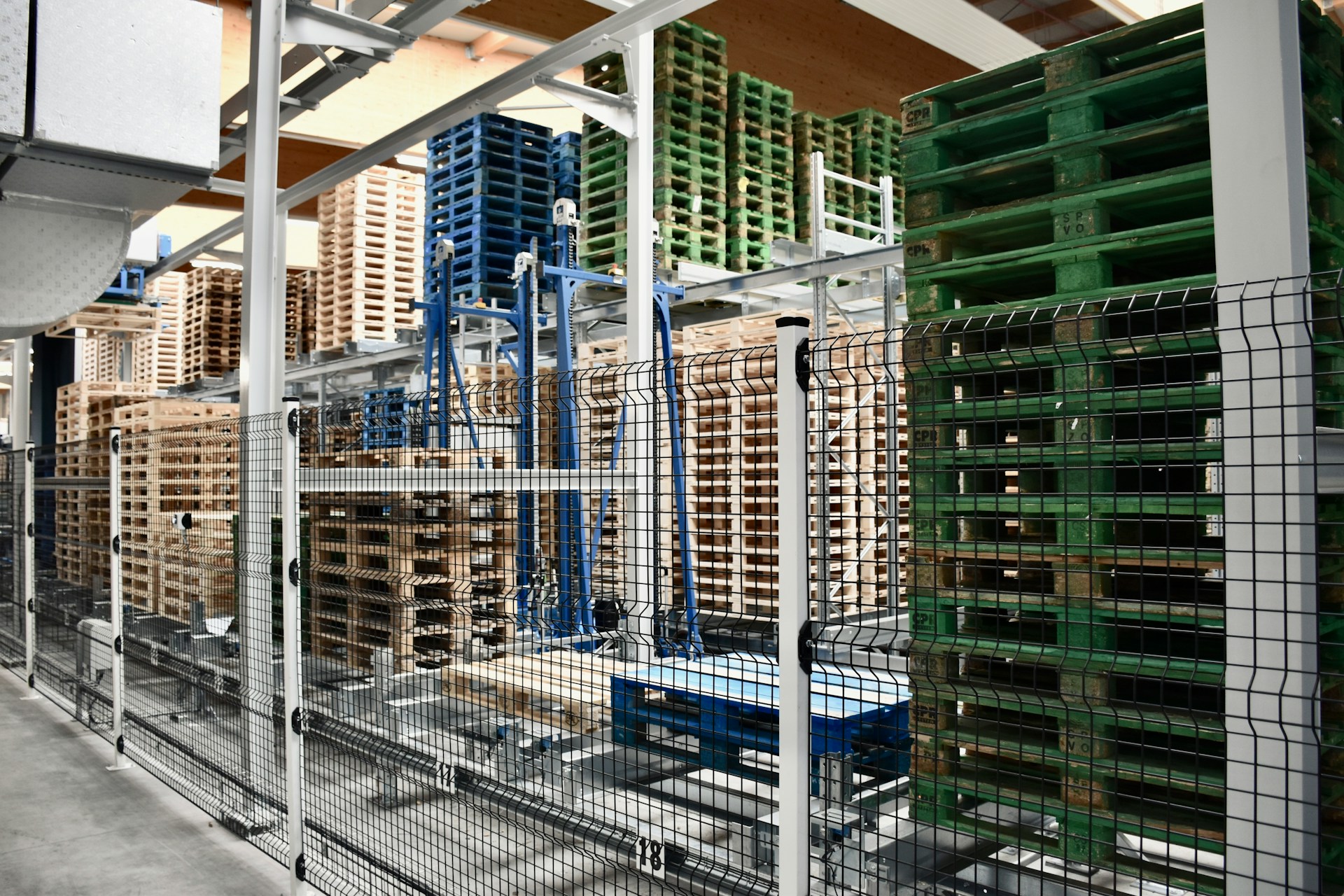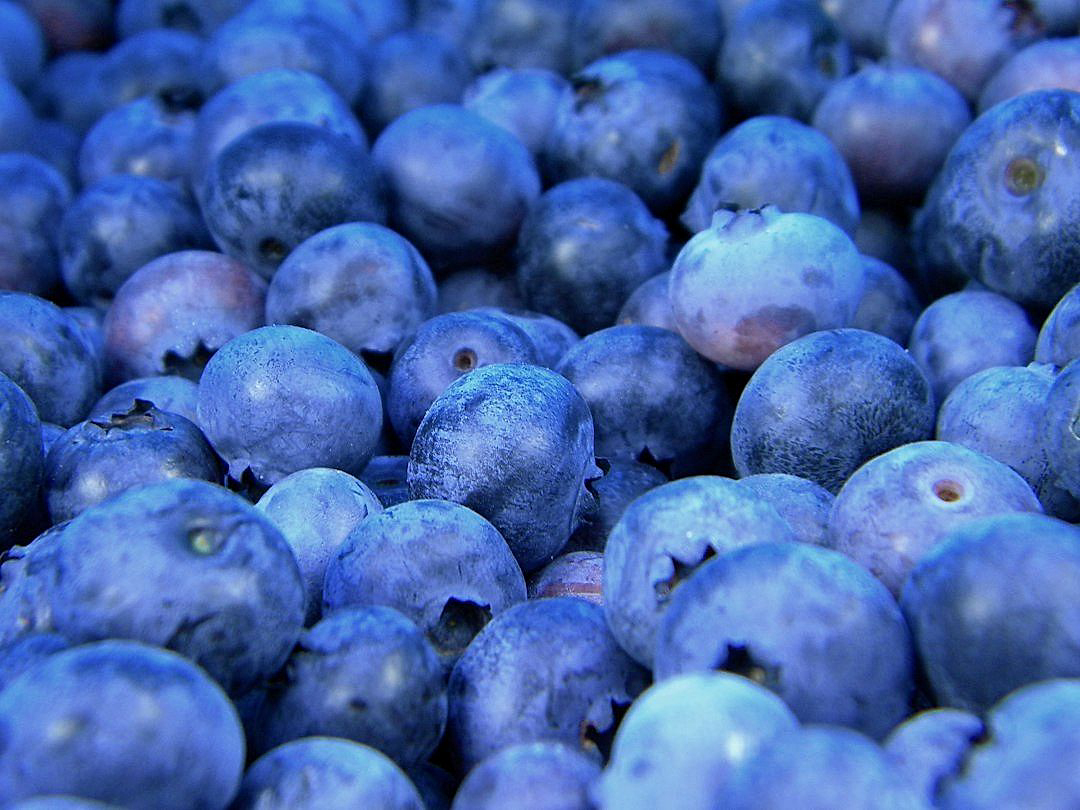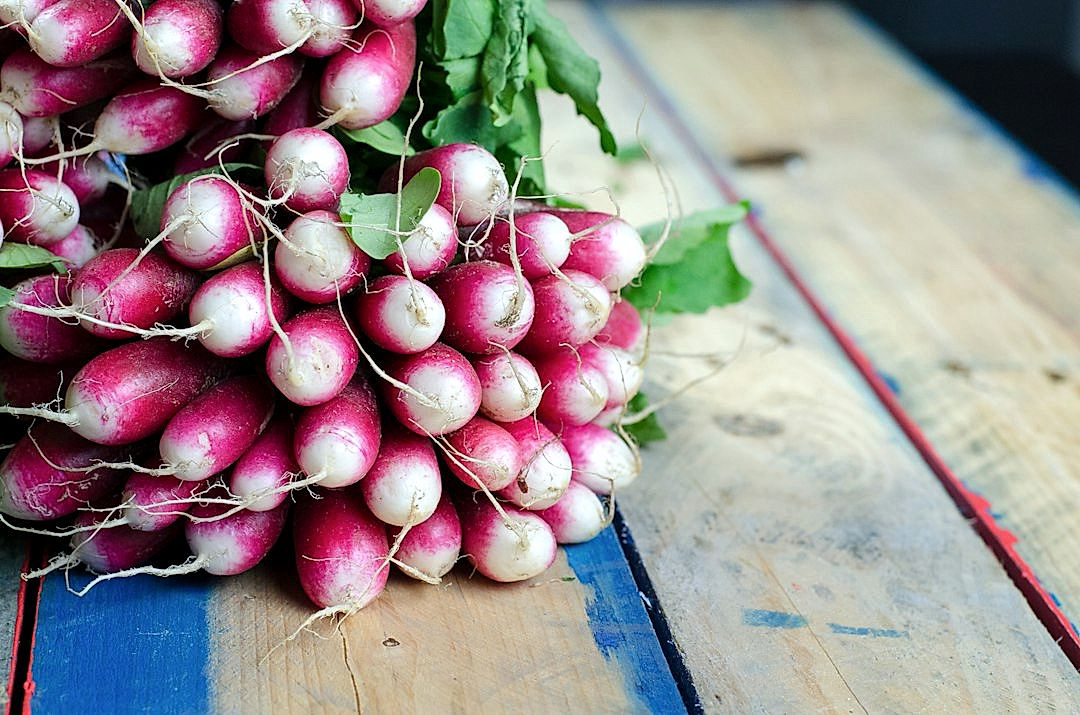Food production has witnessed numerous enhancements and developments mainly attributable to the revolution of technology.
In particular, the packing line, a critical component of this process, has significantly benefited from these advances.
The utilization of these cutting-edge technologies has not only helped streamline operations but also remarkably escalated the quality of produce.
It especially enhanced the efficiency and accuracy, lessening waste and redundancy.
This also enabled a robust and thorough inspection mechanism to ensure the products maintain the highest standard.
This article aims to shed light on these technologies and the impact they have made on enhancing the product quality in the packing line.
Contents
- Technologies Boosting Produce Quality On The Packing Line
- 1. Optical Sorting Machines for Size and Defect Detection
- 2. Robotic Arms for Efficient and Gentle Handling
- 3. Intelligent Packaging Technology for Longer Shelf-Life
- 4. Infrared technology for internal quality inspection
- 5. X-ray Inspection Systems for Foreign Body Detection
- 6. Data Analysis Tools for Process Optimization
- 7. Automated Washing and Drying Systems
- The Bottom Line
Technologies Boosting Produce Quality On The Packing Line
1. Optical Sorting Machines for Size and Defect Detection
Optical sorting machines have made a notable impact on the produce packing line by helping to ensure the most excellent quality of fruits and vegetables.
Their central role revolves around detecting and segregating produce based on size and any visual defects.
Evolving from simple color sorters, optical sorting machines are now equipped with advanced imaging and detection technologies.
These sophisticated machines can identify even minor imperfections in fruits and vegetables, thus contributing to a higher level of produce quality in the packing line.
They leverage a combination of visible light and near infra-red (NIR) spectroscopy to detect defects or contamination in the produce.
When a fruit or vegetable passes through the machine, attainable images are analyzed in real-time for instant defect detection.
These decisions are made based on a set of predefined criteria such as size, shape, color, texture, and the presence of any potential visual defects.
Defective produce is then swiftly ejected from the production line, ensuring only quality products continue on the journey to packaging and sale.
Some of the defects detected by these sophisticated machines include blemishes, rot, mold, and even internal defects that can’t be easily found through manual inspection.
Optical sorting machines are not just efficient; they also bring about unmatched consistency.
Unlike human inspectors who may get fatigued or miss minor defects, these machines operate with constant efficiency and precision.
Furthermore, the use of optical sorting machines boosts throughput, significantly improving the speed and efficiency of the packing line.
These machines are also scalable, capable of handling high volumes of produce without affecting accuracy.
Their use in the packing line, therefore, results in higher yields and results in lower operational costs.
By providing a more accurate, efficient, and cost-effective way of ensuring produce quality, optical sorting machines are a significant technological boon for the produce packing industry.
2. Robotic Arms for Efficient and Gentle Handling
Robotic arms play a key role in the modernization and increased efficiency of packing lines.
Initially, their implementation on the production line reduces the need for manual labor, thus minimizing the risk of human error.
Their programmable nature allows them to perform repetitive tasks efficiently, increasing the speed of the packing process.
Bearing in mind, technological innovations of robotic arms have led to the development of gentle handling mechanisms.
These are especially essential in the handling of produce as it significantly reduces wastage from bruising or dropping.
The enhanced efficiency associated with robotic arms in packing has led to a marked improvement in produce quality.
Furthermore, the integration of robotic arms with other packing line technologies, such as optical sorting machines, creates a seamless packing process.
Robotic arms, combined with innovative sensory technology, are able to pick, sort, and pack produce based on preset parameters, enhancing produce quality and overall efficiency.
Their flexibility for customization makes them highly adaptable to the specific needs of a packing line and type of produce being packed.
For instance, robotic arms used for packing delicate produce like berries can be programmed to use surfaced cupped grips for gentle handling.
This ensures that the integrity of the produce is maintained, preserving its freshness and quality from the farm to the consumer.
Moreover, robotic arms have morphed the packing line into a 24/7 operation, eliminating down-times and significantly boosting production.
Additionally, robotic arms are the manifestation of smart farming practices that leverage technology for high-quality produce.
They are an investment in sustainable production and processing which ultimately leads to higher quality outputs.
While robotic arms signal higher initial investment costs, the ROI from efficient and optimized packing lines outweighs these costs in the long run.
Over time, it is expected that robotic arms will become more prevalent and potentially revolutionize the packing line industry.
3. Intelligent Packaging Technology for Longer Shelf-Life
Incorporating intelligent packaging technology is rapidly transforming the way producers store and ship their products, significantly enhancing their shelf-life.
Intelligent packaging utilizes various technologies, such as Nanotechnology, RFID, TTI, and Oxygen & Moisture Absorbers, to maintain and improve the quality of the produce during transportation and on retail shelves.
Nanotechnology in packaging, for instance, can create an antibacterial film on the packaging surface, extending the shelf-life of the produce by combating bacteria growth.
Radio Frequency Identification (RFID) technology allows for real-time tracking and tracing, ensuring that the handling and storage conditions of the shipped produce are optimal to maintain their quality.
Time-Temperature Indicators (TTIs) integrated into packaging can provide detailed information on the product’s temperature history, enabling accurate shelf life prediction and ensuring freshness of the produce.
Oxygen and moisture absorbers, on the other hand, help in maintaining the appropriate moisture and gas levels inside the packaging, thereby preventing the produce from deteriorating rapidly and enhancing the shelf-life.
The data generated by these intelligent packaging technologies can be used for forecasting, effective inventory management, and process optimization in the supply chain management.
Additionally, by using active packaging systems, companies can enhance the preservation of products; these systems can control humidity, absorb ethylene, release antibacterial agents, and manage other factors that can affect the product’s quality over time.
Furthermore, companies have begun using smart labels or tags embedded with sensors to monitor the freshness of the product throughout its journey, providing invaluable data to improve trade and consumer practices.
In this era of heightened consumer awareness and demand for high-quality, fresh produce, intelligent packaging technology offers a reliable solution for improving produce quality and reducing waste.
Producers and retailers can benefit from this technology by achieving higher sales, improved customer satisfaction, and increased brand reputation for offering high-quality fresh produce.
Moreover, the use of intelligent packaging technology assists in adhering to strict food safety laws and regulations, thereby preventing any potential legal issues.
Finally, intelligent packaging technology, through its multifunctional capabilities, is enabling the food industry to address challenges such as food wastages, consumer perception, and maintaining the quality of the products arriving at consumers’ tables.
The future of the food and produce industry is unquestionably heading towards greener and more intelligent packaging solutions.
4. Infrared technology for internal quality inspection
In the journey to ensure top-notch produce quality, the use of infrared technology has undoubtedly transformed the concept of internal quality inspection.
It’s a non-destructive real-time inspection tool, providing an immediate and full view of every piece of produce that passes through the packing line.
Specially designed sensors detect the infrared light emitted or reflected by the produce, capturing information regarding its internal composition.
This technology allows for the detection of imperfections or irregularities not visible to the naked eye, ensuring only the highest quality produce moves down the line.
Infrared technology can identify issues like bruises or interstitial cavities, which are indicators of potential pathogen presence, thus ensuring food safety.
Moreover, it allows for a more detailed assessment of the fruit’s internal quality, including parameters such as sugar content, acidity, or firmness.
This leads to a more precise categorization and quality grading of the produce, based on factual data, rather than solely visual inspections.
Interestingly, infrared technologies can even detect signs of disease in the early stages, allowing for action to be taken before it affects the larger batch.
In turn, this can lead to reductions in waste, as it allows for early detection and segregation of affected produce.
By combining infrared technology with other technologies like machine learning, the accuracy and reliability of the produce sorting process can be significantly improved.
Such a combination of technologies can also help in building predictive models for shelf-life and other post-harvest performance attributes of the produce.
Thus, infrared technology promotes conformance to quality standards across all levels of fresh produce supply chain, from grower to retailer.
It also provides robust traceability solutions, offering insights into product’s history, from field to fork.
Therefore, the technological advances in infrared inspection systems have revolutionized the produce packing lines to ensure only the best quality produce reaches the consumer’s plate.
Clearly, infrared technology, when integrated into packing line operations, can provide a powerful solution for delivering high-quality, safe, and consistent produce.
5. X-ray Inspection Systems for Foreign Body Detection
In a world that is continuously exploring technological advancements, X-ray inspection systems are proving instrumental in boosting produce quality on packing lines.
Their main purpose is foreign body detection, ensuring product safety for end-users.
These systems are designed to identify and eliminate contaminants that non-X-ray inspection machines might miss.
Foreign bodies that the machine screens for range from metal, glass, stone, to bone fragments that have accidentally mixed with the produce during harvesting or processing.
Utilizing X-ray technology on the packing line significantly reduces the risk of any unwanted element being packed along with the produce, thus helping maintain the credibility of brands, and protecting consumers.
X-ray inspection systems don’t just detect unwanted debris; they also check for missing or broken produce pieces, ensuring a uniform and high quality product delivery.
The system can also be used to conduct quality checks for the produce, further verifying their assurance before they reach the consumer.
The level of precision offered by X-ray inspection systems is unmatched, making it a key player in enhancing food safety.
This breakthrough technology has great potential for use in the field of produce packing due to its ability to penetrate dense organic materials such as vegetables and fruits.
Moreover, the performance of X-ray inspection systems does not deteriorate over time, making it a reliable long term investment for produce companies.
The use of these systems is not just confined to large-scale factories or packing lines, but can also be adapted to smaller-scale operations.
Despite their advanced capabilities, these systems are easy to operate once installed and do not require specially trained operators.
More importantly, X-ray systems do not compromise the structural integrity or quality of the produce while carrying out these inspections.
Improvements and upgrades to this technology continue to evolve, making it more efficient and effective over time.
The use of X-ray technology is convincing more industries of its potential, subsequently promoting a higher standard of food safety and product quality in the market.
6. Data Analysis Tools for Process Optimization
In the landscape of modern packing lines for fresh produce, data analysis tools play a crucial role in enhancing efficiency as well as produce quality.
These sophisticated technologies enable businesses to capture, track, and analyze valuable data related to the organizational processes in real time.
Leveraging data analysis tools in packing lines significantly contributes to streamlining the workflow, eliminating bottlenecks, and most importantly, boosting the overall quality of the produce.
The abundance of data from various points of the production process when harnessed effectively, can help in making informed decisions on how to optimize the packing line.
For instance, data regarding the quantity and quality of produce being processed per hour can provide insights into whether the current production targets are being met or underestimated.
Moreover, the trends and patterns in the data can help predict potential issues and allow for proactive measures, thereby impacting the quality of produce positively.
The power of data analysis extends to informing and educating the workforce, by highlighting areas of inefficiency that may require more training or resource allocation.
Data analysis tools like automated software, algorithms, AI and machine learning can monitor the production line in real time, detecting even subtle deviations from the norm which could potentially lead to quality issues.
With these systems in place, it’s possible to analyze not just the quantity of produce packaged, but also delve deep into parameters such as its color, size, weight and ripeness.
Even factors like ambient temperature, humidity and vibration levels can be monitored and adjusted swiftly, leading to better preservation of produce quality.
Information from data analysis tools is also invaluable in communicating with stakeholders including retailers and consumers, painting a transparent picture about produce quality.
Investing in data analysis technologies is not just a one-time event, but an ongoing journey of continuous improvement for packing line processes.
Moreover, the cost-effectiveness of these technologies over time, as well as the competitive advantage they provide, make them a worthy investment.
Data analysis tools are thus a powerful force driving the quality revolution in produce packing lines.
They truly encapsulate the synergy between technology and quality that lies at the heart of modern produce packing operations.
7. Automated Washing and Drying Systems
The advent of automated washing and drying systems has greatly contributed to improving produce quality on the packing line.
This technology harnesses automation and precision to ensure cleaned and dried produce before it is packaged.
It is designed to remove all dirt and potential contaminants from the produce, and then subsequently dry it efficiently.
The automated washing cycle eliminates manual labor, thus reducing errors and ensuring thorough, consistent washing of every piece of produce.
High-powered jets and intricate brush systems meticulously clean all surfaces of the product, even reaching hard-to-clean areas.
The drying phase of these systems is equally critical as it prevents the onset of mould and elongates the shelf-life of the produce.
Automated drying machines use different technologies ranging from air-knife systems to spin-drying to eliminate moisture.
These systems are not only energy-efficient, they also save on labor costs as they require minimal supervision.
Moreover, they enhance the speed of the packaging process, by providing clean, dry produce ready for packaging in a timely manner.
Automated washing and drying systems can be customized to work with different types of produce, from hard-shelled fruits to delicate leafy greens.
This is a paramount aspect as it allows for the safe handling of a wide variety of fresh produce without compromising on quality.
Furthermore, most models of these systems are fitted with advanced sensors for detecting foreign objects or overly soiled produce, which are then targeted for additional cleaning or removal.
As a result, only the cleanest and the safest produce makes to the packaging phase.
Automated washing and drying systems have the potential to further revolutionize the produce packing line by incorporating more technologies such as robotic arms or artificial intelligence.
Ultimately, these systems are a significant technological leap that significantly boosts overall produce quality on the packing line.
They are proof of how technology can be leveraged to enhance efficiency, precision, and ultimately, the quality of our food.
The Bottom Line
Sentences.
Optical sorting machines, robotic arms, intelligent packaging technology, infrared technology, X-ray inspection systems, data analysis tools and automated washing and drying systems are collectively revolutionizing the agri-food sector.
These technological advancements guarantee high standards of quality control, efficiency, and safety in food production.
By reducing waste, optimizing processes and extending product shelf life, they play a vital role in increasing overall production and maintaining the competitiveness of the industry.
As the industry continues its shift towards full automation, these technologies are poised to become even more integral in boosting productivity and sustainability in the food processing industry.




